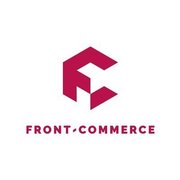Headless eCommerce Platforms
Headless eCommerce Platforms Overview
Best Headless eCommerce Platforms include:
Emporix, BetterCommerce, and Vue Storefront.
Headless eCommerce Products
(1-8 of 8) Sorted by Most Reviews
Learn More About Headless eCommerce Platforms
What are Headless eCommerce Platforms?
Headless eCommerce platforms facilitate the delivery of eCommerce functionality across the spectrum of digital consumer devices. Separating the front and backends of eCommerce platforms allows businesses to effectively manage both what the customer sees and the data, inventory, and transaction processing that eCommerce requires.
The headless eCommerce engine uses APIs and microservices to deliver content and product data to online platforms on a variety of smart devices and front ends; websites, mobile apps, eCommerce sales platforms, AR/VR applications, social networks, wearables, and IoT devices.
This can be accomplished by employing Content Management Systems (CMS), Digital Experience Platforms (DXP), Progressive Web Apps (PWA), or custom front-end solutions. It enables businesses to provide a seamless, compelling eCommerce experience and connect with customers in multiple ways without impacting the backend of the system.
Many types of businesses benefit from this headless approach. It enables businesses with markets in different countries to readily present culture and language appropriate content and accommodate multiple currencies. Marketers for luxury and experience-based brands can concentrate on creating compelling visual content that will work on a variety of platforms and devices without concerning themselves with customized backend integrations.
Headless eCommerce Platforms Features
Most headless eCommerce platforms will provide users with the following features:
- Separation of the presentation layer and backend processing
- APIs to connect content and product data to the user’s front end
- Microservices that support eCommerce functionality
- Product Management
- Inventory Management
- Shopping Cart
- Payment Processing
- Order Management
- Shipping Management
- Customer Relationship Management (CRM)
- Security and Encryption
- Analytics and Reporting
- Integrations with CMS, DXP, and PWA systems
Headless eCommerce Platforms Comparison
When purchasing headless eCommerce platforms consider the following.
- Traditional vs. headless platform: A benefit of traditional eCommerce platforms is that the presentation layer is bundled with the eCommerce functionality. This makes them easier to set up and deploy. This approach is viable if there is a limited need to customize the front end and there is not a requirement to accommodate and scale to a variety of applications and devices. Headless eCommerce platforms provide the architecture to not only support and customize the presentation layer for multiple devices and varying front-end requirements but also offer the flexibility to support new ones in the future.
- Type of platform: Do you only require the backend of a headless eCommerce system and plan to build your front end and APIs (this option offers the most flexibility) or are you seeking a headless solution that comes with prebuilt APIs and templates that support general customization of the front end?
- Resource requirements: Depending upon the complexity of your presentation layer, skilled resources may be required to develop the APIs.
Pricing Information
Basic products start at less than $100 a month. Products that can support large businesses begin at around $2,000 a month. Most products require obtaining a vendor quote to support enterprise-level installations. Free trials are available.
Frequently Asked Questions
What are the benefits of using headless eCommerce platforms?
The benefits of using a headless eCommerce platform include:
- Marketing agility - ability to publish content and connect across a variety of channels
- Enhanced customer experience across device types and digital channels
- Flexibility - site modifications are made to the front end without impacting the backend
- Faster time to market for front end changes
- Accelerates conversion optimization by facilitating A/B testing of customer experiences
- Better security - separating the back end raises the barrier for malicious actors







